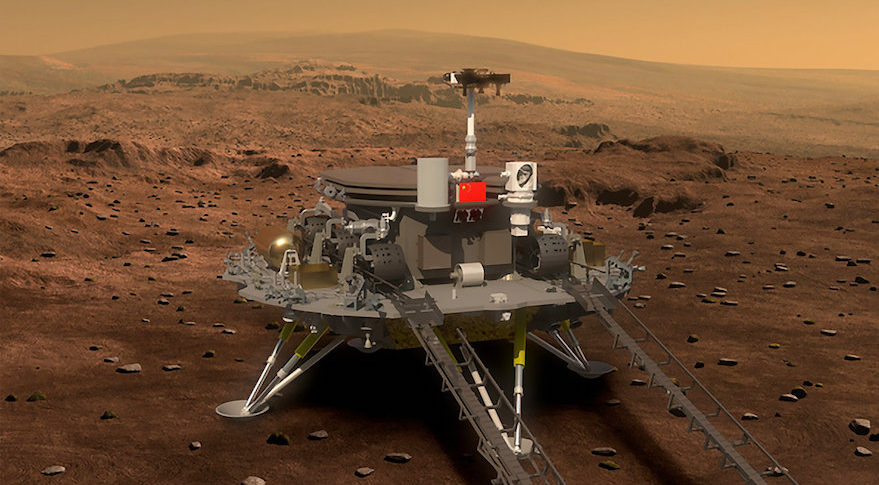Chinese scientists on Sunday revealed that China will launch its first mission to Mars in 2020 and the construction of its rover has been completed.
The launch is being scheduled for when the orbits of Mars and Earth will be nearest to each other, which happens every 26 months and lasts for one month. The Chinese rover will test the Martian soil and observe the Red Planet’s atmosphere, landscape, geological and magnetic characteristics, which could reveal clues and signs to the origin and evolution of Mars and the solar system. The mission will also test whether the planet has the potential to be transformed somehow in the future to harbor life as we see on earth. The said Mars orbiter will have seven scientific devices, while the rover will have six.
The mission involves orbiting, landing and roaming the Martian surface, an expected achievement that shows China’s innovative mindset for space exploration and courage to overcome great challenges, according to Chinese space experts. The space probe’s primary objective is to sense signs of life on Mars, Ouyang Ziyuan, chief scientist of China’s lunar exploration plan, said at a conference on space exploration.
Transmissions send from Earth take approximately 10 minutes to reach the orbiter, so landing commands must be issued before the lander is dropped and many unpredictable situations can occur during the descent nicknamed “seven minutes of terror,” Pang Zhihao, an expert in space exploration technology in Beijing said. Without real-time monitoring, the probe will need to “make its own decision,” Pang added.
A successful landing is only the 1st stage of the rover’s mission in a hostile environment. Another challenge comes from the devastating dust storms on Mars, the worst of which can create a force equals to 12 typhoons on Earth. Such dust storms appear almost every year on the Red Planet and can last for up to three months. Dust storms of Red planet are one of the big three Martian pheromones. They exist up there alongside Valles Marineris and Olympus Mons and last year one ended Opportunity’s mission on Mars.
Because a dust storm could damage a rover’s solar power system, a solution could be to use nuclear power, Pang said.
Mars Express has witnessed numerous local and larger regional dust storms forming in the northern latitudes and disappearing towards the equator. Between May 22nd and June 10th, it saw eight of them.
If you’re interested in Martian dust storm activity, you’re lucky enough. The ESA has both Twitter and Flickr accounts for images from the Express Orbiter’s Visual Monitoring Camera. It’s astonishing to be able to look at a stream of images from another planet over the internet.
Eventually, these local and regional dust storms vanished and the dust is spread into a thin haze in the atmosphere, at altitudes between 20 to 40 km.
For more details, Suggested Read:
http://m.esa.int/spaceinimages/Images/2019/07/Dust_storm_season_on_Mars

